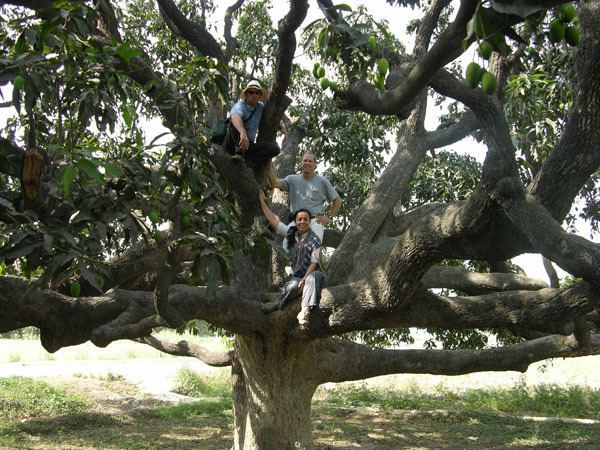Country India State Uttar Pradesh | Language spoken Hindi District Lucknow | |
 | ||
Map of Malihabad
Malihabad (Hindi: मलीहाबाद, Urdu: ملیح آباد) is a town and a nagar panchayat in Lucknow district in the Indian state of Uttar Pradesh. It is the mango belt of North India and is internationally acclaimed for its mangoes. Among different varieties of mangoes grown here, Dussheri is the most popular variety. Besides Dussehri, other varieties of mangoes such as Chausa, Fazli, Lucknowa, Jauhari, Safeda, etc. are also grown here.
Contents
- Map of Malihabad
- Malihabad mangoes harvest time in the heart of indian mango country
- It s mango season in india s mango heartland of malihabad up
- History
- Geography
- Demographics
- Economics
- Film
- References

Malihabad mangoes harvest time in the heart of indian mango country
It s mango season in india s mango heartland of malihabad up
History
The town of Malihabad was established by Raja Malhia Arakh, the younger of the brave brother duo, Salhia and Malhia, belonging to the warrior Arakh clan. Of the two brothers, Raja Salhia Singh laid the foundation of Salhiapura town, which is now known as Sandila, while Raja Malhia Singh founded Malhiapura, now called as Malihabad. Raja Malhia Singh Arakh made Malihabad a contemporary power and a prosperous town. During his rule, Arakh dominion stretched south of Malihabad to parts of Kakori and Bijnour, and along the left bank of Sai to Sissandi. Arakhs held sway over Malihabad and adjoining areas including Datli till 15th century. In AD 1470 , two brothers of the Gautam tribe, Deva Rai and Naya Rana came as a refugees to Malihabad after being exiled from Argal state of Gautams. After winning over the confidence of the Arakh king, they conspired with Pathans to overthrow Arakhs from Malihabad and establish their control. Their efforts paid off when after a prolonged struggle with Arakhs, Gautam brothers took over the control of Malihabad. But soon after, they were themselves displaced by the Pathans. The mango plantations of Malihabad were developed by Pathans, under the royal patronage of the Nawabs of Lucknow.
Malihabad prides itself on Nawab Faqueer Mohammad Khan 'Goya', the poet and courtier of Awadh; "shaayar-e-inquilaab" Shabbir Hasan Khan 'Josh Malihabadi’, Abdul Razzak Malihabadi, Ahmad Saeed Malihabadi who later migrated to Pakistan; Ghaus Mohammad Khan, the tennis player and Anwar Nadeem, stage artist, writer and poet.
Geography
Malihabad is located at 26.92°N 80.72°E / 26.92; 80.72. It has an average elevation of 128 metres (419 feet).The main areas in Malihabad are Mirzaganj, Syedwara, Chaudrana and Kewalhar.
Demographics
As of 2001 India census, Malihabad had a population of 15,806. Males constitute 53% of the population and females 47%. Malihabad has an average literacy rate of 52%, lower than the national average of 59.5%: male literacy is 59%, and female literacy is 45%. In Malihabad, 16% of the population is under 6 years of age.
Economics
Dasheri mango plantations is one of the major income source of the region, with mangoes being exported to many neighbouring countries. Dasheri Mango is very delicious and famous for its sweetness and soft pulp.
Film
The Filmfare Award winner (1979) and winner of National Film Award for Best Feature Film in Hindi (1978), film Junoon was mostly shot in the Mahals of Malihabad. The 1978 Urdu film was produced by Shashi Kapoor and directed by Shyam Benegal and was a hit of its time. The film was based on Ruskin Bond Novella A Flight of Pigeons.
